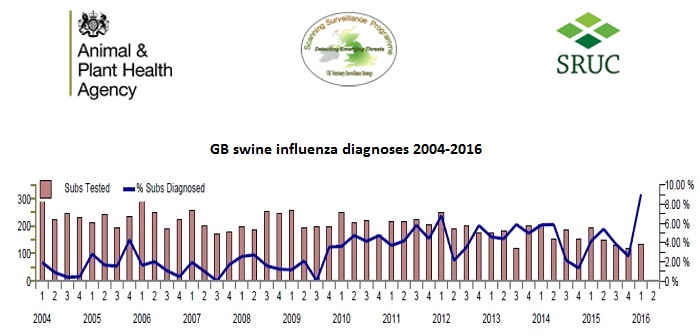Swine influenza diagnoses in England increased “significantly” in the first quarter of this year, reaching its highest recorded level in the last 12 years, according to the latest GB Emerging Threats report from the Animal and Plant Health Agency (APHA).
The agency also reported that its diagnostic data was supported by anecdotal reports from pig practitioners of increased outbreaks in the field over the first quarter of 2016.
“This may well reflect the arrival of the cooler weather and better survival and transmission of the virus, as well as colder wetter weather making effective cleaning and disinfection harder to achieve,” said APHA.
The swine influenza diagnoses were all on pig farms in England; mostly in North Yorkshire and Lincolnshire. Two diagnoses were made in pre-weaned pigs aged two and three weeks old with the remainder in post-weaned pigs with ages ranging from four to 19 weeks.
Four diagnoses were made from submissions of nasal swabs, seven from pig carcases and one from an on-farm post-mortem examination.
The two main swine influenza strains currently identified in GB pigs through the country’s Defra-funded surveillance programme are pandemic H1N1 2009 and H1N2, which are seen in approximately equal numbers.
Access full APHA report. Swine influenza details are shown on pages 10 & 11




